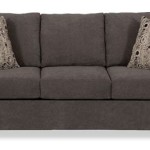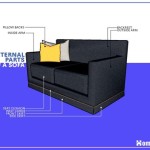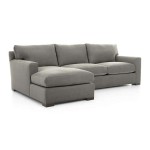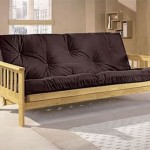Antique Sofa Tables: History, Styles, and Collecting
The sofa table, a slender, elegant piece of furniture designed to sit behind a sofa or against a wall, has a rich history interwoven with evolving social customs and interior design trends. Understanding this history provides valuable context for collectors and enthusiasts seeking to appreciate and acquire these antique treasures.
Sofa tables emerged in the late 17th century, coinciding with the increasing popularity of sofas and settees in European homes. Initially, these tables were primarily functional, serving as surfaces for placing candles, teacups, or books within easy reach of those seated on the sofa. As the 18th century progressed, the design of sofa tables evolved, reflecting the prevailing decorative styles of the period.
The Georgian era (1714-1830) saw a flourishing of elegant and refined furniture design, and sofa tables were no exception. Typical Georgian sofa tables often featured gracefully curved legs, delicate inlay work, and exquisite veneers. Mahogany became a favored wood, prized for its rich color and durability. Some Georgian examples included drawers or shelves for added practicality.
The Regency period (1811-1820) marked a shift towards lighter, more classical designs. Regency sofa tables often incorporated elements inspired by Greek and Roman antiquity, such as lyre-shaped supports, brass paw feet, and decorative motifs like acanthus leaves and scrolls. These tables typically had a streamlined silhouette and emphasized elegant simplicity.
The Victorian era (1837-1901) witnessed a revival of historical styles, including Gothic, Renaissance, and Rococo. Victorian sofa tables could be highly ornate, featuring intricate carvings, elaborate marquetry, and decorative hardware. The use of exotic woods like rosewood and ebony became more prevalent during this period. Some Victorian sofa tables also incorporated mirrors, adding a touch of glamour to the design.
The Edwardian era (1901-1910) saw a return to simpler, more refined forms. Edwardian sofa tables often featured straight lines, delicate inlay work, and restrained ornamentation. Mahogany and satinwood were popular choices for these tables, which maintained an air of elegance while embracing a less cluttered aesthetic.
Identifying genuine antique sofa tables requires careful examination and attention to detail. Examining the construction techniques is a crucial step. Traditional joinery methods, such as dovetail joints and mortise-and-tenon construction, are indicative of handcrafted furniture. Machine-made furniture, which became more common in the later 19th and early 20th centuries, often utilizes different construction techniques.
The type of wood used can also offer clues about a table's age and origin. Certain woods, like mahogany, were favored during specific periods. Examining the patina, the natural aging and wear of the wood's surface, can also help assess a table's authenticity. A consistent, aged patina is a sign of genuine age.
Hardware, such as drawer pulls, keyhole escutcheons, and decorative mounts, can also provide insights into a table's age and style. Examining the hardware for signs of wear and age, as well as its style and materials, can be helpful in determining authenticity.
The presence of maker's marks or labels can be invaluable in identifying the origin and maker of an antique sofa table. While not all antique furniture will have such marks, their presence can significantly enhance a piece's value and provenance.
Condition is a critical factor when assessing the value of an antique sofa table. Original condition, with minimal restoration, is generally more desirable to collectors. However, well-executed repairs and restorations can still maintain a table's value and aesthetic appeal. Significant damage or extensive alterations can detract from a table's value.
When purchasing an antique sofa table, it is advisable to seek out reputable dealers or auction houses specializing in antique furniture. These sources often have the expertise to authenticate and appraise antique pieces. Careful research and examination are crucial before making a purchase. Consulting reference books, online resources, and antique furniture experts can provide invaluable guidance.
Caring for antique sofa tables requires attention to preserving their historical integrity and delicate finishes. Avoiding harsh cleaning products and direct sunlight is essential. Regular dusting with a soft cloth and occasional waxing with a high-quality furniture wax can help maintain the wood's finish and protect it from damage.
Antique sofa tables represent more than just functional furniture; they embody historical craftsmanship and artistic expression. These elegant pieces can enhance the décor of any space while offering a tangible connection to the past. By understanding their history, styles, and collecting considerations, individuals can appreciate the enduring appeal of these antique treasures.

169 Antique Sofa Tables For Ingantiques Co

Antique Mahogany Sofa Table Kernow Furniture

Antique Mahogany Sofa Table Regency Small Drop Flap Pembroke

Ragenardus Sofa Table Antique White Acme Furniture Cart

Antique English Rosewood Sofa Table

Buy Classic Console Table 0121 In Collection Designer Luxury And Vintage Tables Wooden Furniture From Curvesandcarvings Com

19th Century Scottish Mahogany Sofa Table

Antique Grand Italian Baroque Marble Top Console Sofa Table

Console Table Antique Decorating Classic Home Furniture

Vintage Sofa Console Table Double Lyre Pedestal Two Drawers Small Ruby Lane








